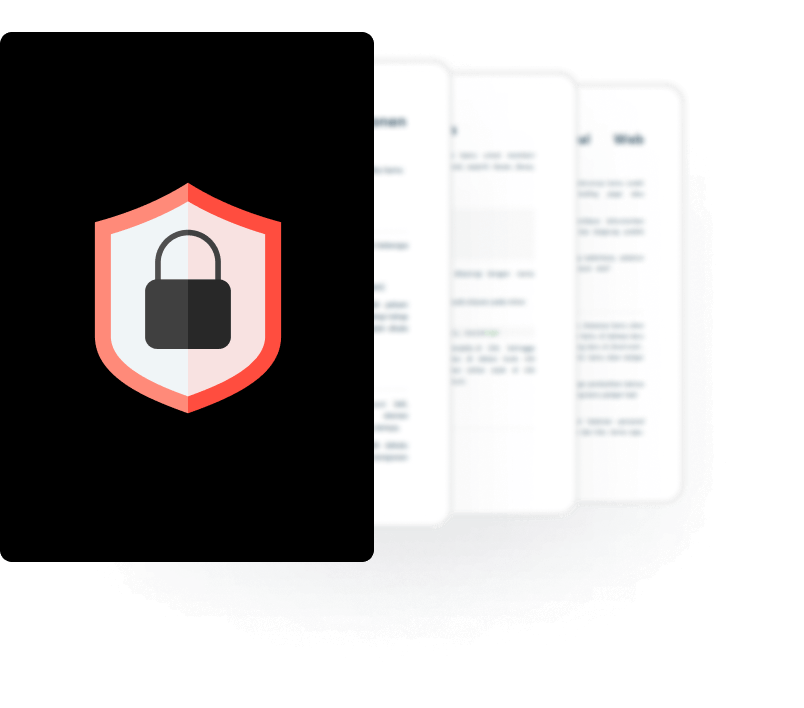
BLOG

BLOG
In cybersecurity, learning the hard way is often the most expensive lesson. High-profile breaches that dominate headlines are more than just cautionary tales—they're stark reminders of what happens when critical gaps in monitoring and detection are ignored.
The true cost of ignoring these vulnerabilities often unfolds in the aftermath of a breach, where financial losses are compounded by
These aren’t just technical failures; they’re organizational blind spots—moments where reactive approaches fell short of proactive defenses.
Take, for instance, the 2017 breach of a major credit bureau that exposed sensitive data of nearly 150 million people. Or the mobile app vulnerability that left millions of users vulnerable to data theft was discovered months after it could have been patched. These incidents weren’t just about hackers being clever but about organizations being unprepared.
What ties these examples together isn’t just the scale of their fallout but the realization and the grave reality that many of them could have been avoided with better vigilance and stronger safeguards.
Here are five examples that are more than case studies that highlight what happens when security takes a backseat—and why it’s crucial to ensure it doesn’t. Let us look closely at five high-profile breaches, dissecting what went wrong and how better security practices could have mitigated the fallout.
These are more than isolated events—they’re a wake-up call for organizations to prioritize security at every stage of their mobile app lifecycle.
Snapchat suffered a breach when hackers exploited weaknesses in its developer API, accessing millions of user accounts. The breach exposed sensitive data, including usernames, phone numbers, and personal images.
Snapchat’s user base of over 100 million was hit, with extensive reputational damage. The company faced regulatory scrutiny and had to address concerns over user privacy. The breach cost the company millions in settlement fees and legal costs.
Centralized app visibility and continuous monitoring would have detected unusual activities and flagged them as potential threats. Real-time tracking and alerts could have enabled swift intervention to mitigate the scope and impact of the breach.
Attackers leveraged vulnerabilities in Target’s third-party app integrations, gaining access to payment card data. The attackers used this access to steal credit card information from millions of customers.
The breach affected 40 million payment card accounts and cost Target over $162 million in settlements and fines. The company's reputation took a significant hit as consumers became wary of using credit cards for online shopping.
Real-time store monitoring could have identified irregularities or unauthorized data access early on. Tracking apps across environments would have revealed vulnerabilities, providing an opportunity to neutralize threats before data exfiltration occurred.
In 2022, attackers used credential-stuffing techniques to gain access to user accounts in Chick-fil-A’s loyalty program, accessing payment information and redeeming loyalty rewards.
The breach affected thousands of customers, leading to a public relations nightmare. The company had to spend significant resources investigating and mitigating the damage, all while reassuring customers that their data was secure.
With proactive store monitoring, the company could have flagged suspicious logins from unusual locations or devices. Behavioral analytics could have also detected the anomaly in reward redemptions, limiting the attackers' ability to access accounts.
Twitter suffered a breach when attackers used social engineering tactics to trick employees into granting them access to internal tools. They then took control of high-profile accounts and spread fraudulent cryptocurrency links.
The breach damaged Twitter’s credibility and user trust, especially among its most influential users. The incident also invited government scrutiny and raised questions about social media security.
Ongoing monitoring of internal tools would have flagged unauthorized access attempts, allowing quick escalation for investigation. Robust controls for app version consistency and flagging suspicious modifications could have prevented internal system misuse.
Attackers uploaded malicious apps onto Google Play, disguising them as legitimate utilities. These apps, once installed, stole data and infected devices with malware.
The breach affected millions of users, and Google had to remove hundreds of malicious apps from its store. It raised serious concerns about the safety of apps on the platform, prompting calls for stricter vetting procedures.
Continuous monitoring could have flagged suspicious app behaviors, such as unexpected permission requests, allowing Google to intervene before the apps spread to millions of devices.
The recurring theme across these breaches is clear: the absence of continuous monitoring leaves organizations blind to evolving threats.
When attackers exploit vulnerabilities in real time, the cost of inaction is monumental. Proactive security measures, like real-time store monitoring, behavioral analytics, and anomaly detection, aren’t just technical solutions—they’re shields against breaches that could devastate an organization.
Continuous store monitoring serves as the first line of defense, providing visibility into app ecosystems and catching suspicious activity before it snowballs into a full-blown crisis. Whether it’s flagging unusual API calls, detecting anomalies in user behavior, or identifying malicious app patterns, this proactive approach ensures you’re one step ahead of the attackers.
Appknox is building Storeknox to address these critical gaps in mobile app security.
Storeknox redefines continuous store monitoring, offering enterprises the tools to detect, respond to, and prevent security incidents across their mobile app ecosystems. With features like drift detection, brand abuse tracking, phishing alerts, and malware analysis, Storeknox equips organizations to tackle threats confidently.
The stakes are too high to settle for reactive security. Join the waitlist today and be among the first to experience how Storeknox can transform your app security strategy.
Hackers never rest. Neither should your security!
Stay ahead of emerging threats, vulnerabilities, and best practices in mobile app security—delivered straight to your inbox.
![]() Exclusive insights. Zero fluff. Absolute security.
Exclusive insights. Zero fluff. Absolute security.
![]() Join the Appknox Security Insider Newsletter!
Join the Appknox Security Insider Newsletter!
